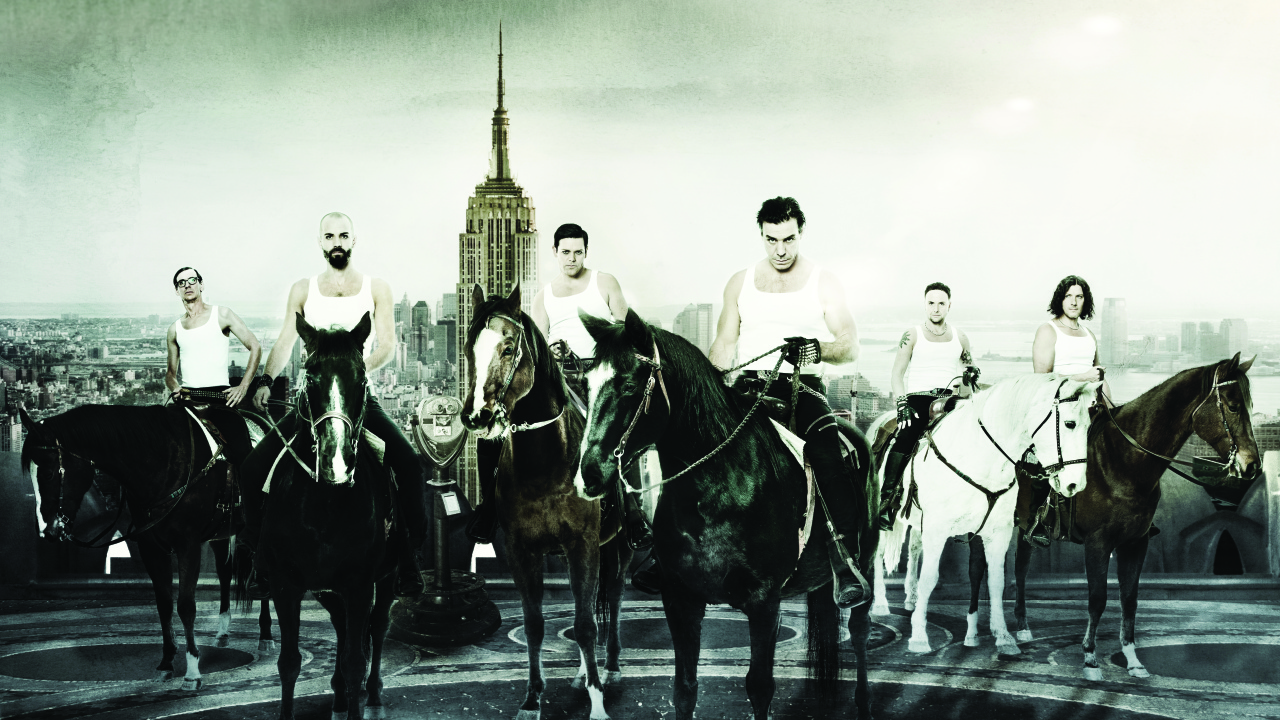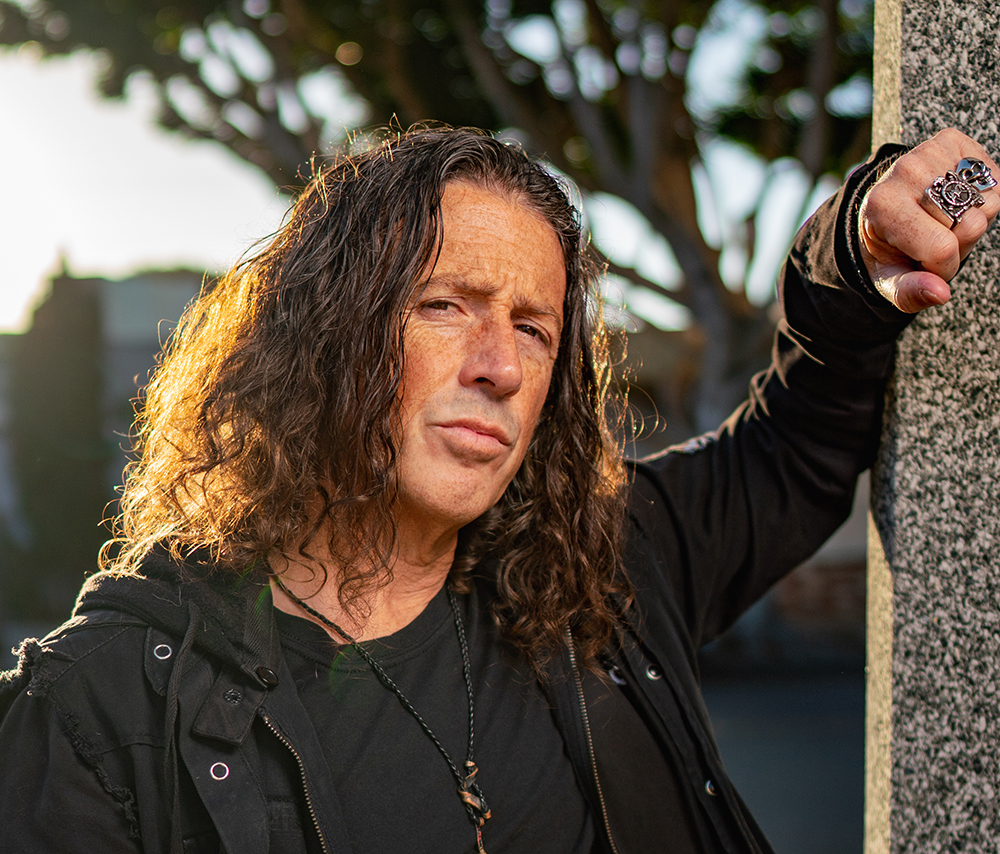Rubbery, milk-spewing dildos, grotesque acts of self-immolation and bludgeoning industrial mayhem. So we’re talking about Rammstein, then?
While showery pyrotechnics and taboo-smashing theatricality assume key supporting roles in the evolution of modern music, few bands have so tightly enmeshed their sound within a visually arresting alternate reality as Rammstein. Their latest DVD, Rammstein In Amerika, delivers both a compelling narrative documentary and a sensory-blowing HD concert film that tell the epic and occasionally perilous story of their 20-year relationship with the USA.
Through candid new and archival interview footage, the band are uniformly humble, self-effacing and wholly unpretentious – but make no mistake, conquering America has always stood among their highest priorities. Clips from 1996-1997 chronicle Rammstein’s transformation from a no-frills German metal outfit to one of Europe’s biggest festival draws, their eye-popping live shows immortalised with flamethrowers, explosions and provocative sexual simulations. By the end of 1997, Rammstein landed their first US tour and concert footage and insightful commentary from promoters, publicists and the likes of Marilyn Manson, Iggy Pop and Steven Tyler describe their meteoric ascent into the American mainstream. Context is critical to understanding the band’s achievements – until Rammstein’s arrival, America’s primary reference points for German rock were Kraftwerk – regarded as a cartoonish embodiment of lifeless German minimalism – and 99 Luftballons. That a sexually liberated industrial metal band singing entirely in German could reach any level of recognition in the US, let alone notch Rammstein’s towering popularity, is nothing short of miraculous.
The documentary takes a probative look at three defining points in their American odyssey: their soundtrack contributions to David Lynch’s arthouse mindfuck, Lost Highway – which paved the way for their US breakthrough single, Du Hast; second, Till Lindemann’s and Flake Lorenz’s arrest on public decency charges in parochial Worcester, Massachusetts, dealing a devastating and disillusioning blow from which they would never fully recover; finally, their touring burnout and eventual exodus from the US in the wake of the 9⁄11 attacks.
After a 10-year hiatus, they returned to the US in 2010 to find that, thanks to the internet, the demand for Rammstein had feverishly exploded in their absence, casting their first concert in a decade – a headlining, sold-out show at Madison Square Garden – as not so much a concert as a coronation. Scenes of 20,000 Americans rhapsodically singing along in German underscore that time and distance only cemented Rammstein’s status as one of America’s most beloved musical imports.
Extras include guitarist Paul Landers’ mini-documentary on the making of Liebe Ist Für Alle Da and a 60-minute video of the MSG concert, shot with 14 cameras in 5.1 surround sound, which now stands as the band’s definitive concert film, boasting utterly bone-crushing acoustics, sharp HD footage and an 18-song greatest hits setlist including highlights like Benzin, Du Hast and Frühling In Paris. But it’s the electrified emotional connection between band and their US audience that takes centre stage, beautifully underscoring that in the realm of music, the human soul knows no language, no laws and no borders.
Hannes Rossacher
| Director |
HOW DID THE BAND COPE WITH THE ARREST OF TILL AND FLAKE IN 1999?
“They learnt the hard way that America is not as liberal and tolerant as one might think, especially when you’re somebody from a former communist country. Freedom of speech means nothing to a local head of police if he hates your guts and feels he has to apply the old and crude ‘indecency law’. On a personal level, the night in jail seems to have been a devastating experience. Being stripped of his glasses and his watch, without information and with his limited English, it left a scar on Flake’s sensitive personality. The band was also concerned about difficulties with work permits. Now, Till and Flake have to undergo extra-long procedures at US border immigration.”
WHAT INCIDENT IN THE DOCUMENTARY BEST ENCAPSULATES the band’S RELATIONSHIP WITH AMERICA?
“After 9⁄11 and the difficult circumstances of the Pledge tour, it seemed the band had buried their American dream. I find it very moving how each bandmember, in his own way, finds the way back. They let go, exhale, regroup and gain new confidence and vision. Bigger than ever, they return to triumph in the world’s most prestigious venue: Madison Square Garden.”
HOW DIFFICULT WAS IT TO GET THE GUYS TO TURN OVER THEIR HOME MOVIES OF THEIR FIRST VISIT TO THE USA IN 1988?
“No problem! Paul, Flake and [Christoph] Schneider were very interested in the process of creating the film out of sheer tons of footage. And they were very helpful to provide us with their home videos. It’s part of the story and there is no reason to be ashamed of anything. Look where they are today!”

